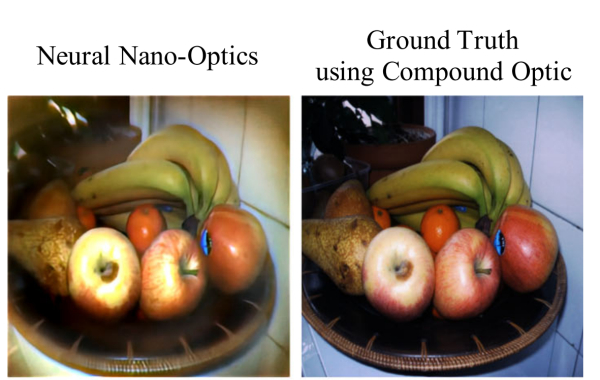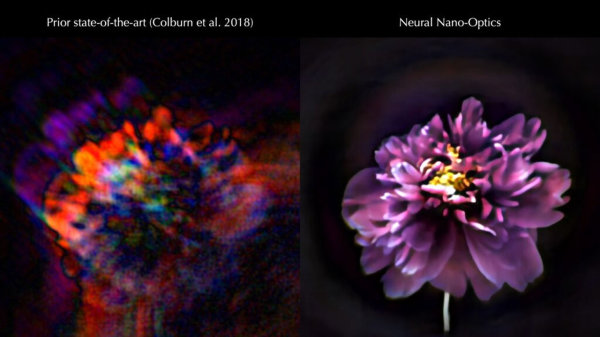[15:26 Thu,2.December 2021 by Rudi Schmidts] |
If you take a closer look at the development of smartphone cameras, you will see two opposing trends: on the one hand, the cameras initially became smaller and smaller compared to conventional cameras; on the other hand, the sensors installed have been growing significantly for years in order to catch up with the image quality of system cameras. Instead of an optical lens, it uses a metasurface riddled with nearly two million cylindrical pins. Each of these "optical antennas" has a different shape in order to transmit the equally different components of the light spectrum. The surface required for this is just half a millimeter thick in total and should theoretically be able to be mass-produced using standard semiconductor manufacturing processes. There have been similar approaches in the past, but the resulting "RAW images" are extremely blurred and show hardly any clear edges. But thanks to AI, the camera&s signal processing algorithms could be trained to output amazingly good images:  Washed out at the edges but still surprisingly good (left). By comparing the camera output with the images of real cameras, the AI was able to estimate the parameters for a much better "debayering" and adjust them accordingly. Only the edges of the image are still blurred. How the whole thing works exactly, explains  As you can clearly see, the image quality is still far from what is expected from even the cheapest camera models today. Nevertheless, the future is likely to be found in such metamaterials, provided the principle can be scaled up further. deutsche Version dieser Seite: Neural Nano Optics -Mit Metamaterial-Optik und KI zur Salzkorn-Kamera |





